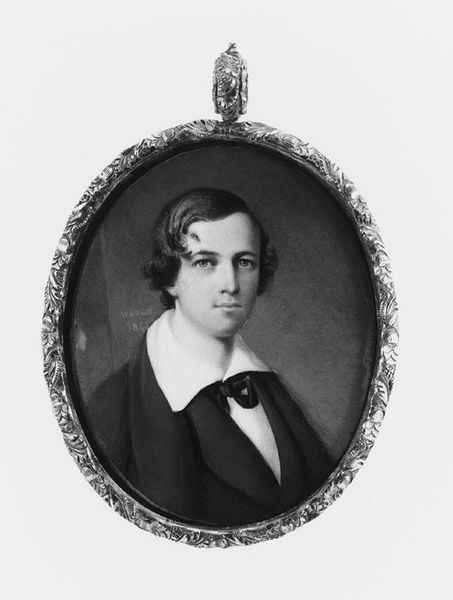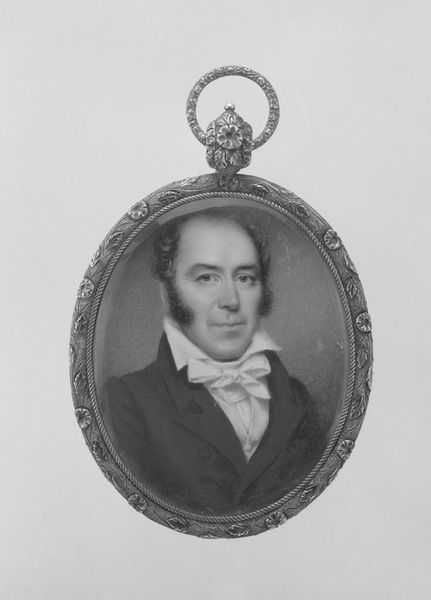
drawing, pencil
#
portrait
#
drawing
#
portrait
#
romanticism
#
pencil
#
academic-art
Dimensions: 2 3/4 x 2 3/16 in. (7 x 5.6 cm)
Copyright: Public Domain
Curator: Before us, we have Emanuel Leutze's "Portrait of a Gentleman," likely rendered between 1834 and 1844, during his time in America or Germany. The medium is pencil on paper, creating a striking tonal range despite its simplicity. Editor: There’s a quiet intensity to it. He looks directly at the viewer with almost defiant, though somber eyes. I notice the tight cropping within the oval frame contributes to that sense of being scrutinized, observed by a personality from the past. Curator: These smaller, often oval, portraits became incredibly popular during this period as accessible tokens of affection or social standing. How someone wished to be represented tells us much about societal values at the time. The man’s dress – that high collar and carefully tied cravat – suggests his aspiration to present as someone from a higher social order. Editor: Precisely, it evokes a particular image, a period rife with class division, as well as burgeoning Romantic ideals of masculinity. The artist uses shadow masterfully. It creates depth and intrigue. The gaze becomes almost a performance of upper class authority and melancholy, filtered through that specific 19th-century lens. The overall mood reads more ambiguous and emotionally turbulent. Curator: I'm interested in your idea of the sitter presenting a performance. Leutze himself lived and worked in an era of great political and social change; his most famous works depicted significant moments of revolution. Here, in the rather intimate act of portraiture, how did Leutze balance artistic expression with patronage? Editor: He certainly negotiates those realms of representation. The artist captures not only physical likeness, but hints at an interiority constrained and determined by those prevailing cultural structures, though offering space for complexity and resistance to shine through. Curator: This small pencil drawing invites questions about the power dynamics inherent in art. Leutze, an artist shaped by his era, represents an unknown gentleman. He gives the gentleman a face, both in terms of his time and place. Editor: Yes, bringing together those historical pressures and moments of individual identity and insight that echo beyond its specific time period is a reminder of art’s capacity to illuminate and provoke critical thought.
Comments
No comments
Be the first to comment and join the conversation on the ultimate creative platform.













